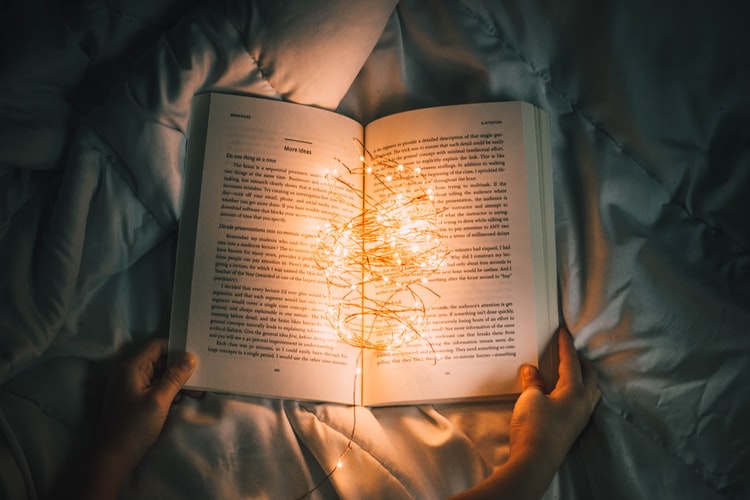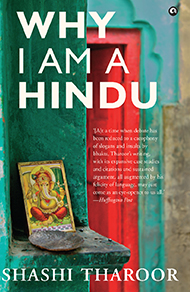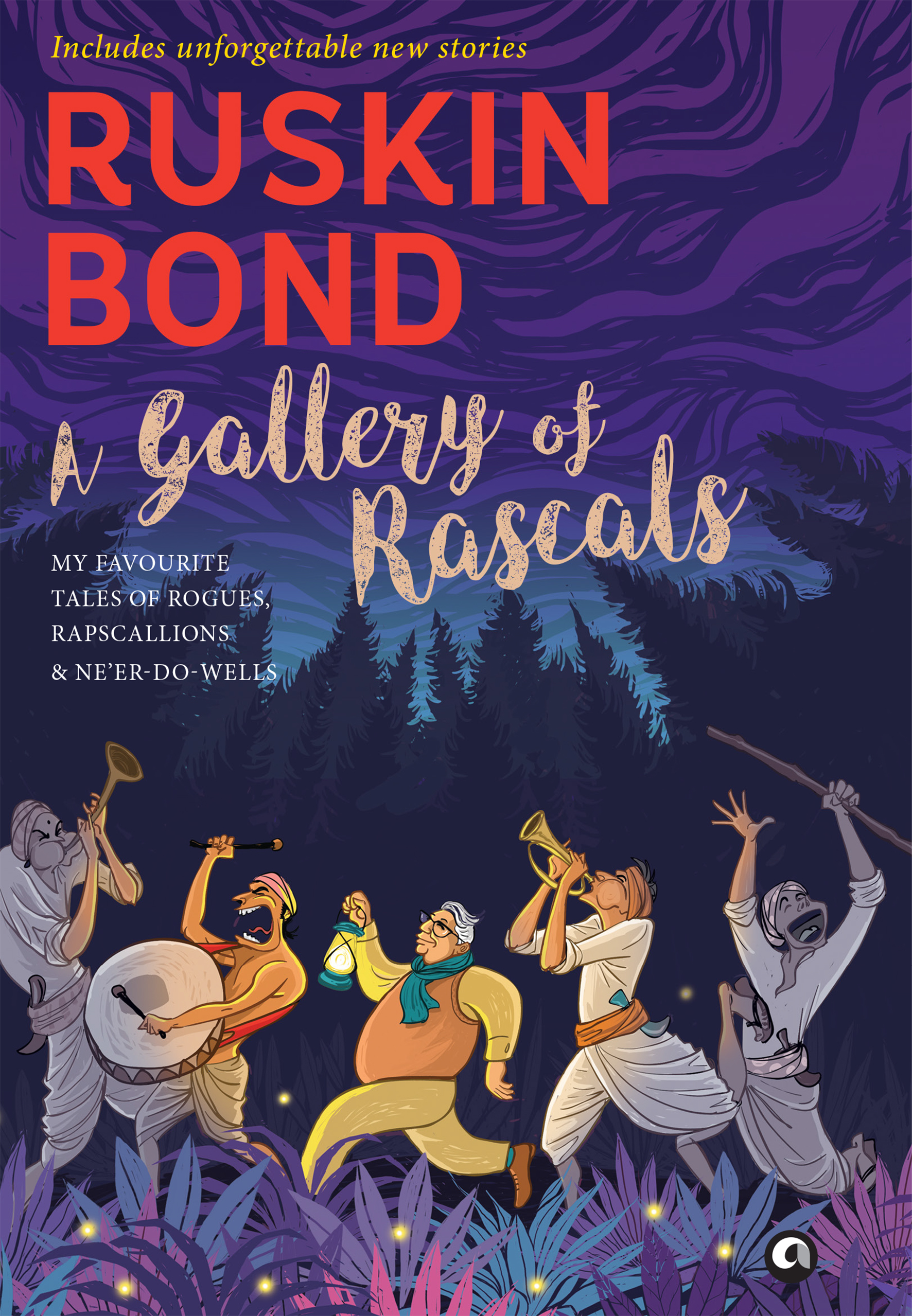What do your reader friends expect on Diwali (or any other occasion or no occasion actually)? Are you looking for interesting ideas for someone who is not particularly excited by the standard affairs of sumptuous boxes of sweets, dates and diyas? Here are some books that will definitely brighten their Diwali.
Why I Am a Hindu by Shashi Tharoor
In Why I Am a Hindu, one of India’s finest public intellectuals gives us a profound book about one of the world’s oldest and greatest religions. Starting with a close examination of his own belief in Hinduism, he ranges far and wide in his study of the faith. He talks about the Great Souls of Hinduism, Adi Shankara, Patanjali, Ramanuja, Swami Vivekananda, Ramakrishna Paramahamsa, and many others who made major contributions to the essence of Hinduism. He delves deep into Hinduism’s most important schools of thought (such as the Advaita Vedanta). He explains, in easily accessible language, important aspects and concepts of Hindu philosophy like the Purusharthas and Bhakti, masterfully summarizes the lessons of the Gita and Vivekananda’s ecumenism, and explores with sympathy the ‘Hinduism of habit’ practised by ordinary believers. He looks at the myriad manifestations of political Hinduism in the modern era, including violence committed in the name of the faith by right-wing organizations and their adherents. He analyzes Hindutva, explains its rise and dwells at length on the philosophy of Deen Dayal Upadhyaya, its most significant ideologue. He is unsparing in his criticism of extremist ‘bhakts’, and unequivocal in his belief that everything that makes India a great and distinctive culture and country will be imperiled if religious ‘fundamentalists’ are allowed to take the upper hand. However, he also makes the point that it is precisely because Hindus form the majority that India has survived as a plural, secular democracy.
A Gallery of Rascals by Ruskin Bond
Ruskin Bond is the most addictive and entertaining writer in modern Indian literature. The author of over a hundred novels and short-story collections, his fiction is especially celebrated for the unforgettable misfits, dreamers, small-time con artists, rapscallions, thieves and drifters who populate it. For the first time ever, A Gallery of Rascals brings together the most memorable rogues to feature in Ruskin Bond’s fiction. A few brand new stories—‘A Man Called Brain’, ‘Sher Singh and the Hot-water Bottle’, ‘Crossing the Road’— headline this collection and rub shoulders with much-loved tales like ‘The Thief’s Story’, ‘The Boy Who Broke the Bank’, ‘Tigers for Dinner’ and ‘A Case for Inspector Lal’. Thrilling and effortlessly readable, the thirty stories in this book show exactly why Ruskin Bond’s fiction is irresistible.
The Bengalis by Sudeep Chakravarti
The Bengalis are the third largest ethno-linguistic group in the world, after the Han Chinese and the Arabs. A quarter of a billion strong and growing, the community has produced three Nobel laureates, world-class scientists, legendary political leaders and revolutionaries, iconic movie stars and directors, and an unending stream of writers, philosophers, painters, poets and musicians of the first rank. But, bald facts aside, just who are the Bengalis? What is the community all about, stereotypically and beyond stereotype? In order to find the answers to these and related questions, the author (a Bengali born and steeped in his own culture but objective enough to give us a balanced reckoning of his fellows) delves deep into the culture, literature, history and social mores of the Bengalis. He writes with acuity about the many strengths of the community but does not flinch from showing us its weaknesses and tormented history. He points out that Bengalis are among the most civilized and intellectually refined people on earth but have also been responsible for genocide and racism of the worst kind. Their cuisine is justly celebrated but few remember the cause and effect of millions of Bengalis dying of famine. Renowned for their liberal attitudes, they are also capable of virulent religious fundamentalism. Argumentative and meditative, pompous and grounded, hypocritical and wise, flippant and deep… Bengalis are all this and much, much more. With erudition, wit and empathy, this book manages to capture their very essence. Unarguably, it is the definitive portrait of one of the world’s most vibrant and distinctive communities.
Extraordinary stories for readers of every stripe.
For centuries, the animal kingdom has captured the Indian imagination. And the land of the Panchatantra and the Jataka Tales continues to give rise to literary masterpieces. Some of the greatest stories in modern Indian literature have animals as protagonists.
In Animalia Indica, Sumana Roy collects the best fiction written about animals from the past hundred years or so. Beginning with Premchand’s classic, ‘A Tale of Two Bullocks’, and taking in its sweep some of the greatest pieces of literary fiction to have originated in India including ‘Rikki-Tikki-Tavi’ by Rudyard Kipling, ‘Mahesh’ by Sarat Chandra Chattopadhyay, ‘The Mark of Vishnu’ by Khushwant Singh, ‘A Horse and Two Goats’ by R. K. Narayan, ‘Poonachi’ by Perumal Murugan, ‘The Crocodile and the Monkey’ by Vikram Seth, ‘The Reflections of a Hen in Her Last Hour’ by Paul Zacharia, ‘The Last Tiger’ by Ruskin Bond and ‘Elephant at Sea’ by Kanishk Tharoor, the stories in Animalia Indica are guaranteed to dazzle the reader.
These stories, centred on animals, and written over the last hundred years or so, are among the greatest feats of creation in the annals of modern Indian literature. Once read, their flaming brilliance will ensure they are never forgotten.
Daughters of the Sun by Ira Mukhoty
In 1526, when the nomadic Timurid warrior-scholar Babur rode into Hindustan, his wives, sisters, daughters, aunts and distant female relatives travelled with him. These women would help establish a dynasty and empire that would rule India for the next 200 years and become a byword for opulence and grandeur. By the second half of the seventeenth century, the Mughal empire was one of the largest and richest in the world.
The Mughal women—unmarried daughters, eccentric sisters, fiery milk mothers and powerful wives—often worked behind the scenes and from within the zenana, but there were some notable exceptions among them who rode into battle with their men, built stunning monuments, engaged in diplomacy, traded with foreigners and minted coins in their own names. Others wrote biographies and patronised the arts.
In Daughters of the Sun, we meet remarkable characters like Khanzada Begum who, at sixty-five, rode on horseback through 750 kilometres of icy passes and unforgiving terrain to parley on behalf of her nephew, Humayun; Gulbadan Begum, who gave us the only document written by a woman of the Mughal royal court, a rare glimpse into the harem, as well as a chronicle of the trials and tribulations of three emperors—Babur, Humayun and Akbar—her father, brother and nephew; Akbar’s milk mothers or foster-mothers, Jiji Anaga and Maham Anaga, who shielded and guided the thirteen-year-old emperor until he came of age; Noor Jahan, ‘Light of the World’, a widow and mother who would become Jahangir’s last and favourite wife, acquiring an imperial legacy of her own; and the fabulously wealthy Begum Sahib (Princess of Princesses) Jahanara, Shah Jahan’s favourite child, owner of the most lucrative port in medieval India and patron of one of its finest cities, Shahjahanabad.
The very first attempt to chronicle the women who played a vital role in building the Mughal empire, Daughters of the Sun is an illuminating and gripping history of a little known aspect of the most magnificent dynasty the world has ever known.
Happy festivities!


